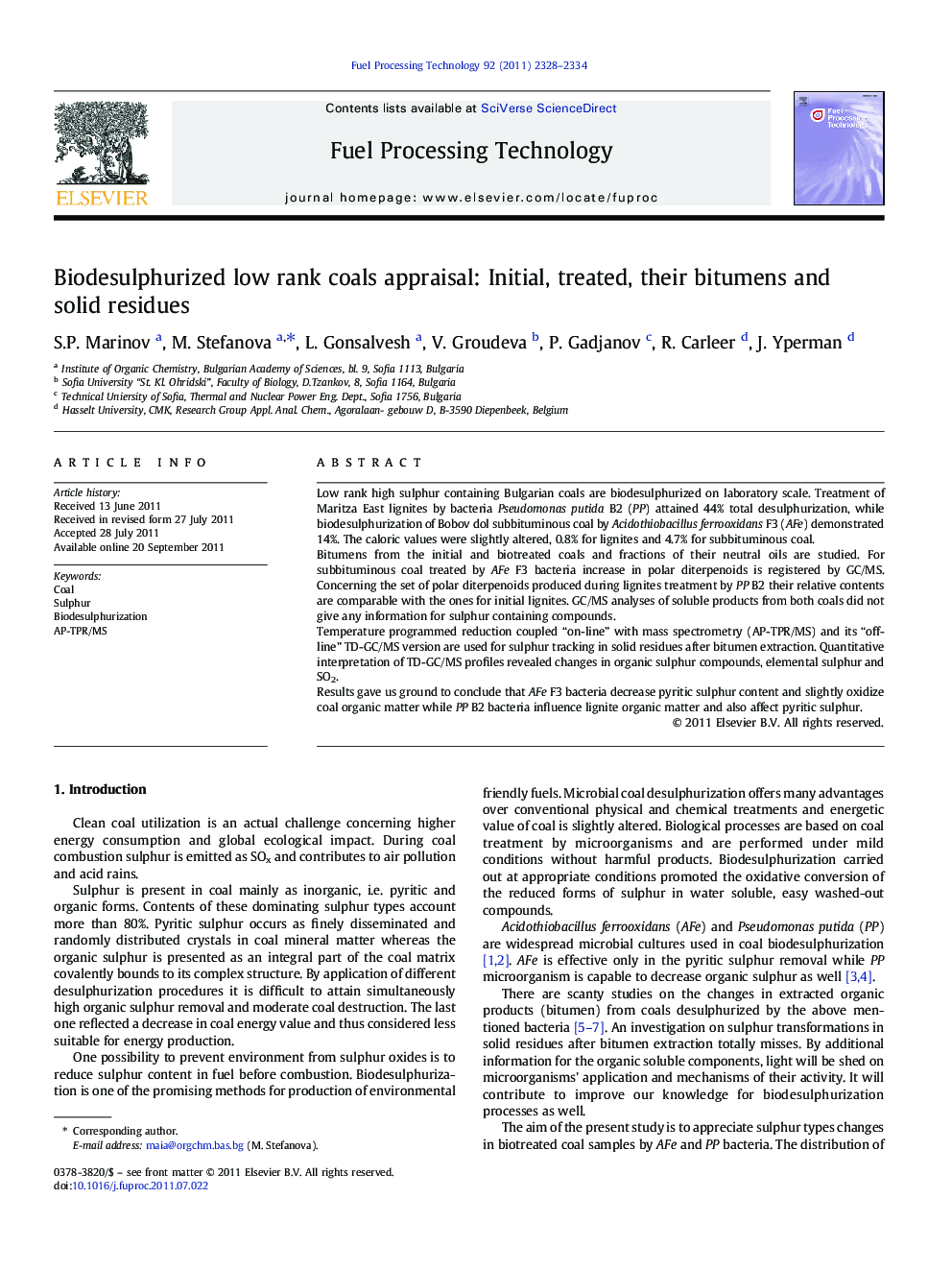| Article ID | Journal | Published Year | Pages | File Type |
|---|---|---|---|---|
| 210523 | Fuel Processing Technology | 2011 | 7 Pages |
Low rank high sulphur containing Bulgarian coals are biodesulphurized on laboratory scale. Treatment of Maritza East lignites by bacteria Pseudomonas putida B2 (PP) attained 44% total desulphurization, while biodesulphurization of Bobov dol subbituminous coal by Acidothiobacillus ferrooxidans F3 (AFe) demonstrated 14%. The caloric values were slightly altered, 0.8% for lignites and 4.7% for subbituminous coal.Bitumens from the initial and biotreated coals and fractions of their neutral oils are studied. For subbituminous coal treated by AFe F3 bacteria increase in polar diterpenoids is registered by GC/MS. Concerning the set of polar diterpenoids produced during lignites treatment by PP B2 their relative contents are comparable with the ones for initial lignites. GC/MS analyses of soluble products from both coals did not give any information for sulphur containing compounds.Temperature programmed reduction coupled “on-line” with mass spectrometry (AP-TPR/MS) and its “off-line” TD-GC/MS version are used for sulphur tracking in solid residues after bitumen extraction. Quantitative interpretation of TD-GC/MS profiles revealed changes in organic sulphur compounds, elemental sulphur and SO2.Results gave us ground to conclude that AFe F3 bacteria decrease pyritic sulphur content and slightly oxidize coal organic matter while PP B2 bacteria influence lignite organic matter and also affect pyritic sulphur.
► Coals were biodesulphurized by Pseudomonas putida or Acidothiobacillus ferrooxidans. ► GC-MS data revealed that coal organic matter was slightly oxidized during treatment. ► AP-TPR/MS was applied to find sulphur changes in residues after bitumen extraction. ► TD-GC/MS data were quantitatively interpreted to assess organic sulphur compounds.
